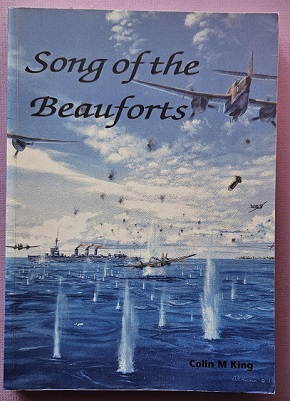Description
Title: Lost Without Trace – Squadron Leader Wilbur Wackett RAAF. A Story of Bravery & Tragedy in the Pacific War
Author: Kane-Maguire, Leon
Condition: Mint
Edition: 1st Edition
Publication Date: 2011
ISBN: 9781920800642
Cover: Soft Cover without Dust Jacket – 243 pages
Comments: In September 1944 a Beaufighter from No 31 Squadron, RAAF, crashed in the Northern Territory following a strike mission over Japanese-occupied Timor. Although evidence was discovered some time later that the two-man crew of the aircraft had survived the crash, no trace was ever discovered of what became of them.
The pilot of the lost Beaufighter was Squadron Leader Wilbur Wackett, the 23-year-old son of Lawrence Wackett—himself an ex-RAAF officer who became well-known as one of Australia’s leading aircraft designers. Wilbur had followed his father’s footsteps into the Air Force before the war, and was a veteran of the air campaign in New Guinea where he had already survived being shot down and avoided certain death at the hands of the Japanese.
This book highlights the flying career of Wilbur Wackett and describes the catalogue of tragedy that unfolded with his mysterious end. The loss of Wilbur was quickly followed by the loss of his only child. His wife, who remarried, lost a battle with cancer at a young age. Strangely, the full circumstances of Wilbur’s disappearance were withheld from his father until just before Sir Lawrence’s death in 1982.
Lost Without Trace is a stark reminder of the cruel fate which could await airmen who were downed while operating in the harsh environment of Australia’s north.
No. 31 Squadron was formed at the Forest Hill base near Wagga Wagga, NSW, on 14 August 1942. After equipping with the Bristol Beaufighter and being brought up to strength, it moved to Batchelor in the Northern Territory in October and then to its new home at Coomalie Creek, south of Darwin in November. The squadron’s first combat operation took place on 17 November 1942.
Over the next two years, No. 31 Squadron flew ground attack sorties against the Japanese in Timor and the Netherlands East Indies, as well as anti-shipping patrols and convoy protection missions. One of its greatest successes was the raid on Penfoei on 2 December 1942, when the Beaufighters caught 40 Japanese aircraft on the ground. Without loss to themselves, they destroyed eighteen and damaged many more. In November 1944, the squadron deployed to Noemfoor, from where it flew two convoy protection missions before moving again, to Morotai, in late December to attack Japanese positions in the Celebes and Halmahera Islands.
Setting up on Tarakan in May 1945, No. 31 Squadron carried out strikes in support of the Australian landings in Borneo and Brunei in June and the operations that followed. After the Japanese surrendered on 15 August, the squadron dropped leaflets over the Halmaheras to inform the garrison of those islands that the war was over.
No. 31 Squadron returned to Australia in December 1945 and disbanded at RAAF base Williamtown on 9 July 1946.



